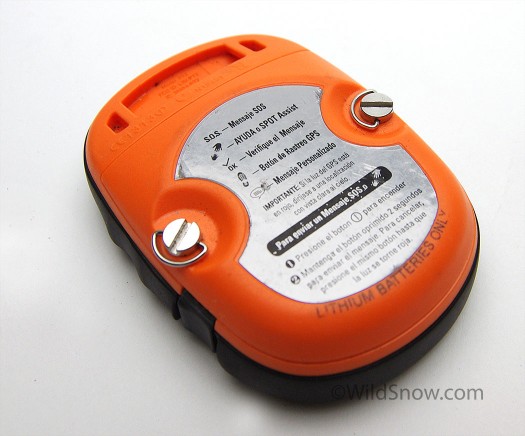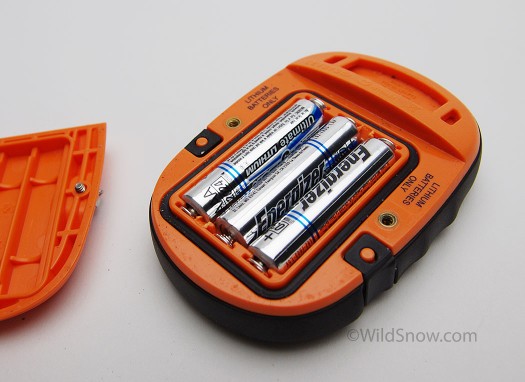There are a few items I carry on every outdoor trip I do, mostly survival gear. One of those is my SPOT emergency beacon, officially called a “SPOT Satellite GPS Messenger.” Me, I’ll just keep calling it a “beacon.”
Spot beacons differ from most emergency beacons because they aren’t just an emergency beacon. They also have functions for less urgent situations. My original, first generation spot beacon had three buttons: one for 911, one for “help”, and one “OK” button. The 911 button goes to a call center, which will attempt to contact the correct authorities depending on your location. The “help” and “ok” buttons are user programmable, for non-emergency situations. The newer, smaller beacon has these, as well as a fourth button that can be custom programmed to send a message such as “need helicopter food drop.”
I thankfully haven’t had to use my spot beacon in a real emergency involving the authorities. However, I’ve had it help me a few times, mostly when I’ve been back later than planned and I didn’t want to cause panic. Last year, on an early season ski descent of Eldorado Peak in the North Cascades, SPOT proved its usefulness. After a long day, we reached my car in the late evening. We packed it up, piled in, and I turned the key. Nothing. It tried to turn over a bit and died. I’d had a few issues starting my car in the cold recently, but had avoided spending any money to fix it. My laziness had come back to bite. We were now stuck 20 miles up a remote road, with no food and no way out. We tried push starting, and a few other things, but finally had to give up. I pressed the help button on my SPOT, and then we dozed for a few hours, not looking forward to the 20 mile walk the next morning. If we didn’t get my car out before the next storm, it would be stuck up there all winter — there was already a foot of snow on the ground.
I was a little skeptical the SPOT would work given we were in a deep valley, and even if it did, I wasn’t sure anyone would come, or even know what was up. Nonetheless I was hopeful.
We woke to headlights and someone knocking on the window. It was my friends, Henry, Jason and Coop! They had left at 7:00 PM, crashed their car on the icy road, and still made it to where we were by midnight. After an epic, car-mangling (it’s amazing how easy you can jerk a bumper off a truck), hilarious drive out, we made it back in time for Coop’s graduation party.
It wasn’t a life-threatening situation. I would have felt a little silly using the 911 feature on the SPOT, because we could have gotten out on our own (even if it would have been brutal and perhaps even dangerous depending on the weather). However, if my buddies had not shown up my car might have stayed up there all winter. It was the perfect time to be able to contact someone for help, just not the authorities.

SPOT comes with a few sets of instructions that stick onto the back. I put the Spanish version on for South America.
Of course, it’s great to have the safety net of the 911 function as well. Since I’ve never used it, I can’t comment much on how it works. From hearing about others using it, and being involved with mountain rescue, it’s my opinion that it’s much better than nothing, but not something that can be 100% relied upon. I’ll clarify. When you press the 911 button, the SPOT sends a message to a call center which attempts to notify the correct authorities. In the U.S. that’s usually the local sheriff, who in turn will notify mountain rescue if appropriate. That takes time. More, if you’re in a third or second world country it’s hard to know who the call center would notify of your plight, or how long you’d end up waiting for a rescue. Also, unfortunately the call center won’t have any info besides your location. With more information the rescue would tend to happen quicker with better chance of success. Thus, if I ever have to send a SPOT message, it will be hard to decide whether to hike out for help as well, or put all my trust in the beacon. (This is when a two-way communication solution such as the SPOT Connect product, satphone or a another brand satellite texting device may be worth their weight, complexity and cost.)

The Spot uses three AAA batteries. The old one used AA, which was different than most of the other devices I carry so I'm glad to be back to the ubiquitous AAA.
For me the combination of a 911 device combined with the ability to send a variety of messages is where the Spot beacon really shines. It’s also terrific to send an “OK” message to show people where you are having fun (and don’t forget the tracking feature, which shows your route on Google Maps). To have all that in such a small, durable package is impressive. I mean, this little thing only weighs 120 grams. Leave your car keys and phone behind and it’s a wash in terms of added weight.
See our other comprehensive SPOT posts.
SPOT is definitely something for your Christmas shopping list! Check here.
Louie Dawson earned his Bachelor Degree in Industrial Design from Western Washington University in 2014. When he’s not skiing Mount Baker or somewhere equally as snowy, he’s thinking about new products to make ski mountaineering more fun and safe.


